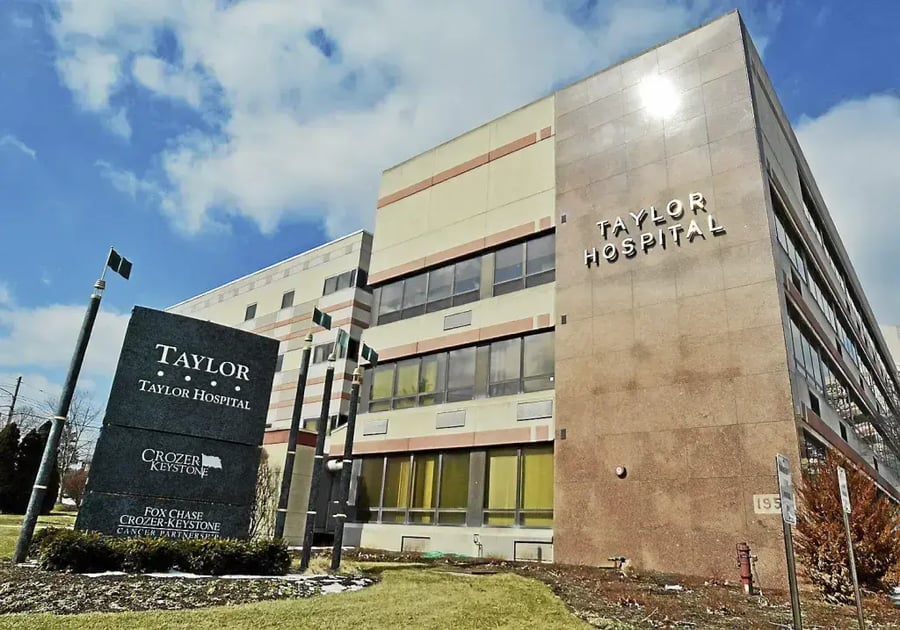Cybersecurity in EHR and EMR Systems

-
Recent attacks across the country have affected entire hospitals, shutting down their systems and leaving many with no option but to close their doors to entering patients
-
Defining and discussing EHR and EMR systems, their pros and cons, and how we can work against these incidents so they cease to exist.
Modern Healthcare Systems
In an society that has largely been structured by the rapid advancements and developments in technology, the healthcare industry has seen tremendous transformation in the last decade or two. Undoubtedly one of the more significant changes to the space, and one that has been seen in some form in most industries, is the digitization of records (patient records, in this instance) through Electronic Health Records (EHR) and Electronic Medical Records (EMR).
These two systems alone, EHR and EMR, have largely shaped the healthcare sector that we see today. Through these record keeping systems, greater data management, improved and more efficient patient care, and more seamless communication between professionals or offices. However, alongside these benefits, we find concerns about patient privacy and data security… Regrettably these concerns surrounding this technology come with good reason.
Understanding EHR and EMR Systems
Before further discussion of the two systems, it is important that they are each clearly defined.
- EMR (Electronic Medical Records): EMR systems focus on digitizing traditional paper medical records. They contain patient information gathered during specific visits to a healthcare provider. EMRs streamline data storage and retrieval within a single healthcare facility.

- EHR (Electronic Health Records): EHR encompass a more comprehensive view of a patient’s health. EHRs integrate information from various healthcare sources, including various medical providers, specialists, pharmacies, laboratories, clinics, etc. This interconnectedness ensures a comprehensive overview of a patient’s medical history, serving as useful for different offices/practices when trying to fully understand a patients background.
Advantages of EHR and EMR Systems
1. Enhanced Accessibility and Data Availability
EHR and EMR systems surpass the limitation found in that of paper records as they transcend the plane of physical barriers. Authorized healthcare providers can access a patient’s records remotely, ensuring timely and informed decision-making; this removes delays in the decision making process and can allow for doctors/providers to communicate directly if need be.
2. Streamlined Data Management
Electronic health record storage removes the need for physical storage and manual record keeping. The benefit here is undeniable as it removes the need/risk for a plethora of things such as physical storage, manual record keeping/sorting, record loss, damage, or misfiling. The ability to search, filter, and sort through digital records enhances operational efficiency and reduces administrative burdens. As a whole, this saves time, money, possible data loss, and countless headaches.
3. Improved Patient Care and Safety
EHR and EMR systems deliver healthcare providers the most accurate, up-to-date patient information possible. With such extensive data, including allergies, medications, and past treatments, all aid in accurate diagnosis and particular treatment plans.
4. Data-Driven Insights
The wealth of data stored within EHR and EMR systems can be harnessed for research and analytics. Medical professionals can identify trends, patterns, and outcomes across large patient populations. This data-driven approach paves the way for evidence-based practices, continuous quality improvement, and advancements in medical research.
Disadvantages of EHR and EMR Systems
1. Data Security and Privacy Concerns
As we will further discuss in this article, the digitization of sensitive patient data raises significant security and privacy concerns. EHR and EMR systems are vulnerable to data breaches, hacking attempts, and unauthorized access. The potential exposure of patient records not only jeopardizes patient confidentiality but also exposes healthcare organizations to legal and financial liabilities.
2. Interoperability Challenges
While EHR systems are designed to centralize patient information, achieving seamless interoperability between different systems remains a challenge. Healthcare facilities often use diverse EHR and EMR platforms that may not communicate effectively with one another. This lack of interoperability hampers the exchange of patient data across institutions, potentially compromising the continuity of care.
3. Complex Implementation Process
Depending on who you ask, the implementation process of EHR and EMR systems can be a rather complex challenge that many healthcare organizations will face at a point in time. The transition from traditional data-keeping to electronic systems can be meticulous and requires a great level of attention to detail. It may be a sizable financial investment and does in fact take some getting used to once implemented.
4. Loss of Data/Fragile Systems
In our world today, it is hard to deny our rather codependent relationship with technology. If a system fails, such as Microsoft Excel, it is hard to even consider the mayhem that would ensue. Nearly every major sector would be impacted almost immediately, in a very serious way.
Relying on electronics, such EHRs and EMRs, require our full trust in the system to get up and running, as intended, each and every day. Without the systems functioning, all of the aforementioned pros are no longer in the discussion.
Recent Attacks
Last week, a California healthcare provider, Prospect Medical Holdings, was the victim of a cyberattack that had led to the closure of multiple emergency rooms across the country. Part of the attack was rather close to home, two of the attacks focusing on Crozer-Chester Medical Center in Upland and Taylor Hospital in Ridley Park (four total were in Delaware county).
For the time being, the nurses’ union at Crozer-Chester reported a switch to paper-based systems due to the system outages that may last upwards of a week (which is far too long for a medical center of any sort). Globally, healthcare remains a primary target for cyberattacks, as highlighted by IBM’s annual data breach report, with each attack costing an average of $11 million.
The breach forced Connecticut’s Manchester Memorial and Rockville General emergency departments to shut down, affecting various services across Prospect Medical-owned facilities, including elective surgeries and urgent care. Prospect Medical-affiliated hospital Waterbury Health also faced disruptions, while in Pennsylvania, Crozer Health facilities were impacted, adding to the sector’s ongoing cybersecurity challenges.
Protecting Patient Data
- Encryption: Data encryption is a fundamental defense mechanism. It involves converting patient data into a code that can only be deciphered with the appropriate encryption key. This ensures that even if unauthorized access occurs, the stolen data remains unintelligible.
- Access Control: Limiting access to patient records based on role and necessity is crucial. Not all healthcare staff require full access to all patient data. Implementing strict access controls minimizes the risk of data exposure.
- Regular Auditing and Monitoring: Continuous monitoring and auditing of EHR and EMR systems help identify unusual patterns of access or suspicious activities. Prompt detection enables timely intervention to prevent data breaches.
- Implementing advanced threat detection solutions can identify potential breaches before they escalate. Artificial intelligence and machine learning technologies can recognize anomalous behavior patterns, thwarting attacks in real time.
- Employee Training: Human error contributes significantly to data breaches. Regular training sessions for healthcare personnel on data security best practices can mitigate this risk.
- Collaborative Intelligence Sharing: Healthcare entities should participate in information-sharing networks to exchange threat intelligence. By collectively pooling knowledge, the industry can collectively address emerging threats.
The Government’s Role
Government bodies and industry associations play a vital role in shaping cybersecurity standards within the healthcare sector. Regulatory frameworks mandate the adoption of specific security measures, ensuring a baseline level of protection for patient data. Compliance with these regulations not only protects patients but also demonstrates an organization’s commitment to data security. Luckily, we have recently seen more and more government bodies taking cybersecurity more seriously than they once had.
In recent articles we had spoken about CISA and how they plan to further develop the United States’ cybersecurity as a whole. Seeing officials and entire governing bodies take more initiative in this direction is equally as pleasant of a sight as it is essential.
Moving Forward
As technology continues to evolve, so will the landscape of healthcare data management and cybersecurity. The integration of blockchain technology, which offers transparent and tamper-proof records, holds promise in enhancing patient data security. Additionally, artificial intelligence-driven cybersecurity solutions will become more sophisticated, pre-empting threats before they materialize. Aside from these solutions, though we sound like a broken record, we urge everyone to regularly update their systems, act with caution, and implement some sort of antivirus.
Tthe digital transformation of healthcare brings immense benefits, but it also poses significant challenges in terms of patient data security. The role of cybersecurity in managing EHR and EMR systems cannot be understated. Implementing robust cybersecurity measures, staying informed about emerging threats, and adhering to regulatory standards are pivotal steps in preserving patient privacy in the digital age.


